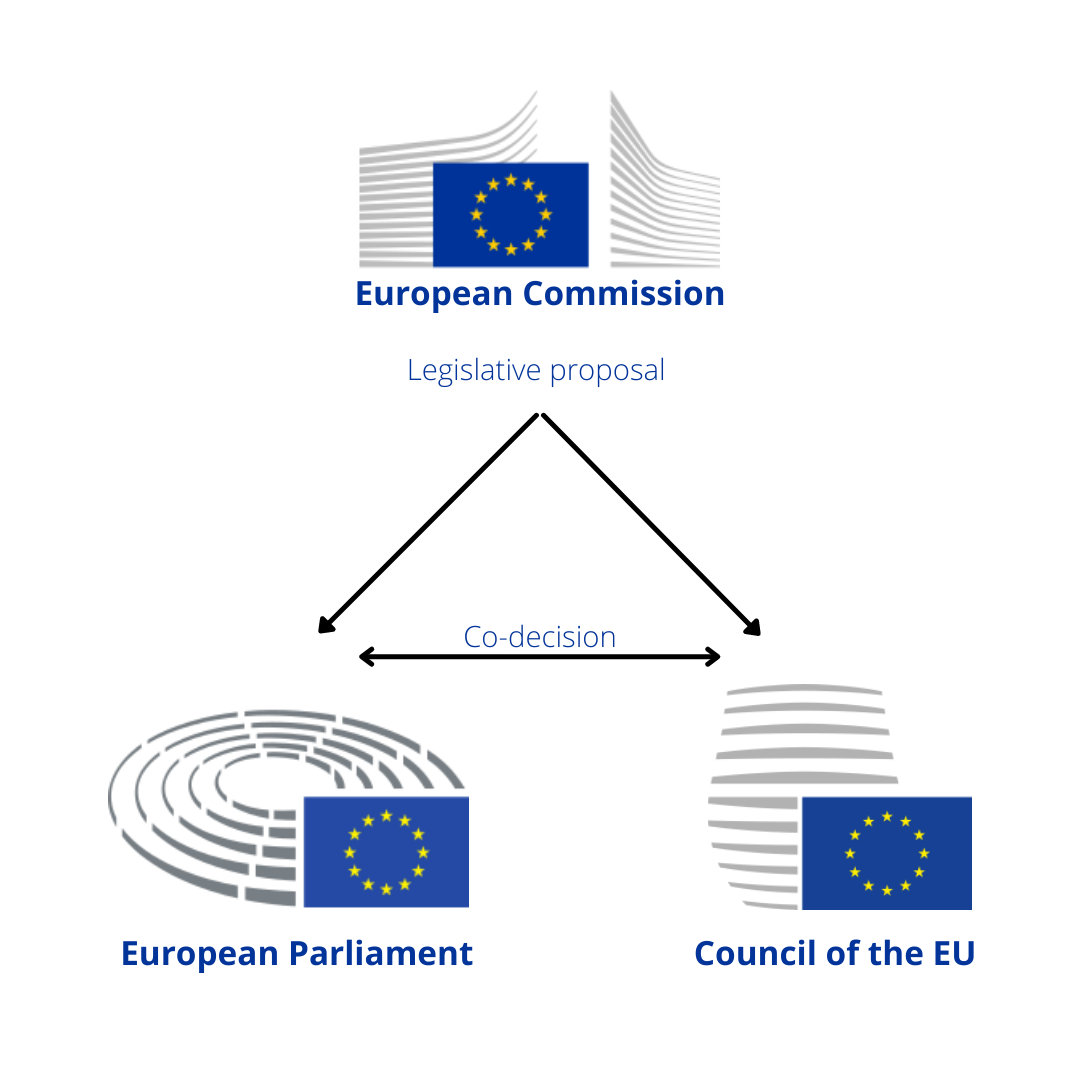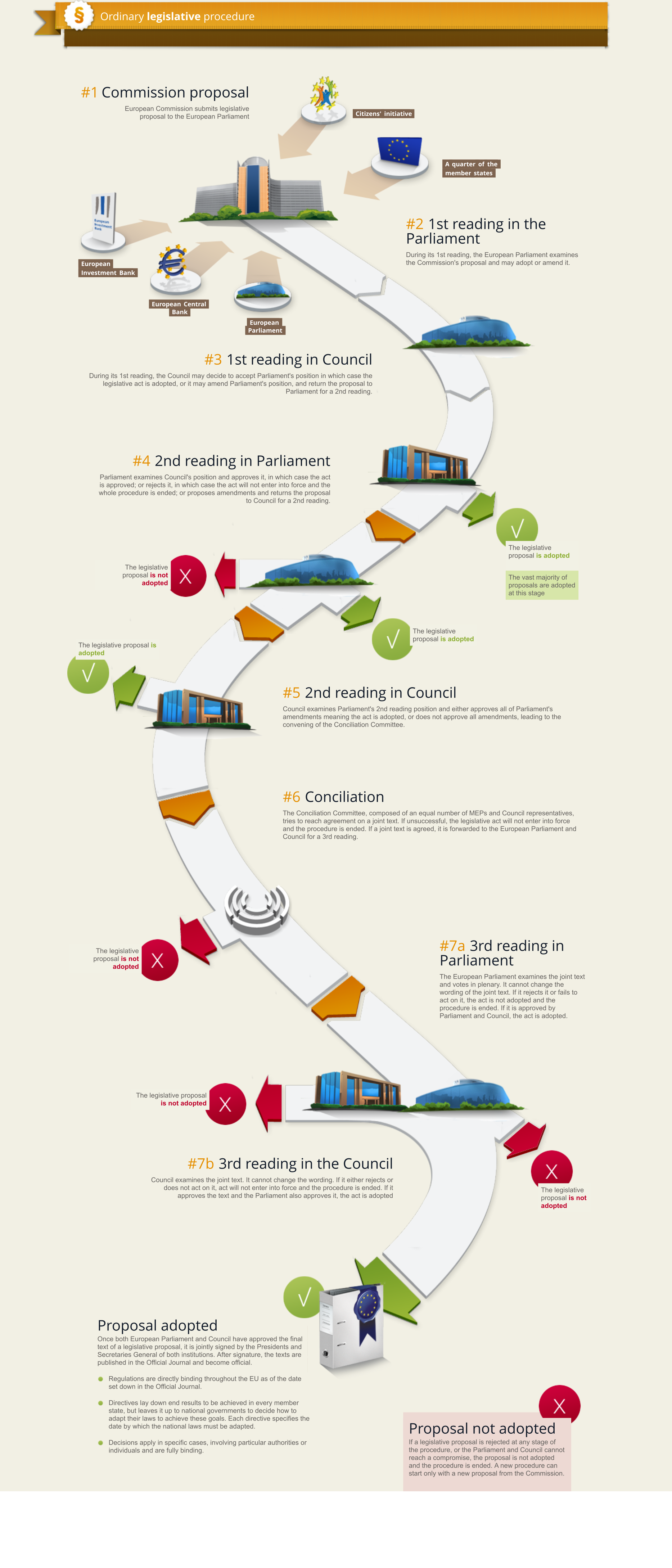European institutions and the EU anti-discrimination policy
5. The legislative process
The EU legislative process develops within the so-called "institutional triangle" made up of three EU institutions:

EUROPEAN PARLIAMENT
The European Parliament, the only directly elected body of the EU, represents the over 447 million inhabitants of the member countries (data 2020, source Eurostat) and is made up of 705 deputies. It was first elected by universal suffrage in 1979. Its powers have been extended through successive amendments to the EU treaties. Its role in the legislative process is that of co-legislator together with the Council of the EU, that is, it amends and adopts the proposals of the Commission, which alone has the right of legislative initiative.
EUROPEAN COMMISSION
The European Commission represents the interests of the European Union as a whole. Its main functions are: to propose common policies and legislation and ensure compliance with them, ensure the implementation of policies, and manage the community budget. It is appointed every five years, following the European elections. The Commission is made up of a college of 27 commissioners (one for each member country) and led by a President elected by the Parliament on a proposal from the European Council. The commissioners are chosen by the President; once approved by Parliament, they are appointed by the European Council and officially take on their functions.
The Commission prepares legislative proposals on its own initiative, at the request of Parliament or member countries, or following citizens' initiatives, often after public consultations open to various stakeholders including civil society.
The Commission's department dealing with anti-discrimination laws is the Directorate-General for Employment, Social Affairs and Inclusion (DG EMPL).
In this infographic, the current composition of the European Commission:

Source: European Commission
Learn more about the 6 priorities of the European Commission for the period 2019-2024
THE COUNCIL OF THE EUROPEAN UNION
The Council of the European Union represents the governments of the 27 EU member countries at ministerial level: its members are the ministers of each country responsible for the matter under discussion ( →The 10 Council formations).
The Council is chaired alternately by a member state for a period of six months. In the European decision-making process, the Council is a co-legislator together with the Parliament. Several times a month the competent ministers of each member country meet to decide on specific issues: economic affairs, transport, energy, agriculture, etc. Depending on the area, the Council decides by simple majority, by qualified majority, or by unanimity. The latter is required above all for all areas considered particularly sensitive by member countries, for example issues related to common foreign and security policy, including the accession of a new country, European finances, and issues related to social security.Qualified majority
About 80% of the deliberations of the Council of the EU take place according to the rule of "double majority" or qualified majority. According to Article 238 of the Treaty on the Functioning of the European Union (TFEU) "by qualified majority we mean at least 55% of the members of the Council representing the participating Member States that total at least 65% of the population of these States”.
Most of the EU legislation is adopted jointly by the European Parliament and the Council of the EU using the ordinary legislative procedure, also known as codecision (COD).
Explore the infographic describing the mechanism and the possibility of one, two, or three readings by the two co-legislators and a conciliation procedure between the EP and the Council:

Source: European Parliament